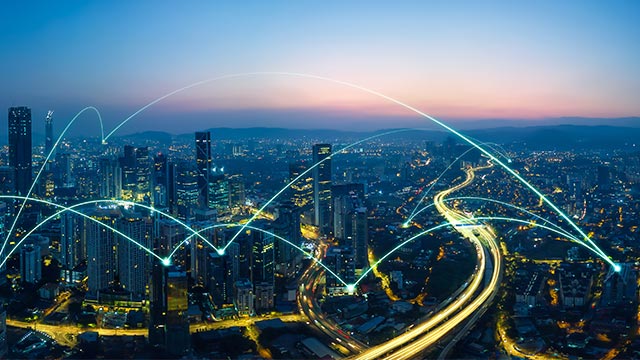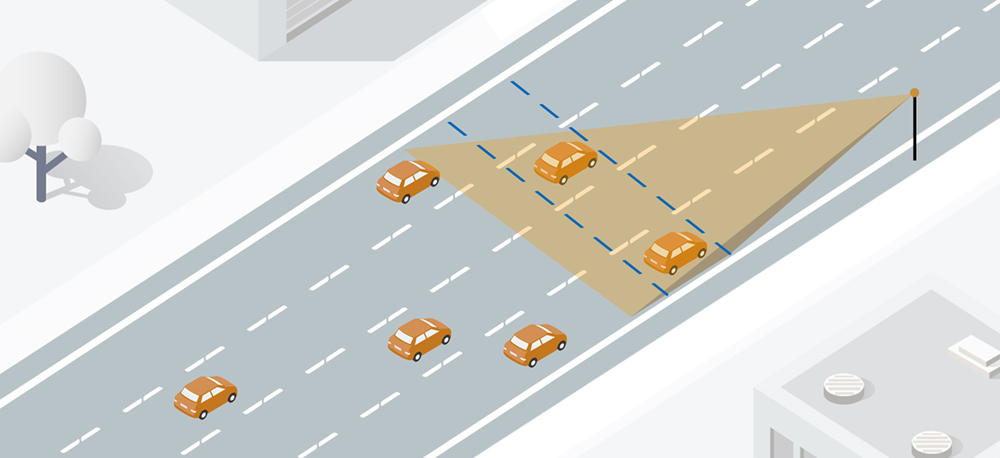Application of Traffic Sensor Fusion Technology in Multi lane Speed Enforcement

With the development of Intelligent Transportation Systems (ITS), Multi Sensor Fusion (MSF) technology has gradually become one of the key technologies to improve traffic management efficiency. Especially in multi lane speed enforcement, the application of multi-sensor fusion technology can significantly improve the accuracy and efficiency of law enforcement, reduce traffic accidents, and ensure the safety and smoothness of road traffic. This article will explore in detail the specific application and impact of multi-sensor fusion technology in multi lane speed enforcement.
1. Overview of Multi Sensor Fusion Technology
Multi sensor fusion technology refers to the integration of data from multiple sensors, which is processed uniformly through computer algorithms to achieve a more comprehensive, accurate, and complete information processing process than a single sensor. Multi sensor fusion technology can be divided into three levels: data layer fusion, feature layer fusion, and decision layer fusion:
Data layer fusion: This is the most basic fusion layer, which mainly processes raw data from different sensors. The goal of data layer fusion is to synchronize and calibrate the original data of different sensors, eliminate the differences caused by sensor type, location, environment and other factors, and generate consistent data sets. For example, in multi lane speed enforcement, data collected by laser radar, millimeter wave radar, and cameras can be aligned through timestamps and spatial coordinates to ensure consistency and accuracy of the data.
Feature layer fusion: Based on data layer fusion, feature layer fusion further extracts and integrates feature information from various sensor data. This level of fusion typically involves signal processing and pattern recognition techniques, aimed at extracting useful information from large amounts of data. For example, LiDAR can provide accurate distance and speed information, millimeter wave radar can provide the motion status of vehicles, and cameras can capture the appearance features of vehicles. Through feature layer fusion, this information can be combined to form a more comprehensive vehicle motion model.
Decision level fusion: This is the highest level of fusion, based on the processing results of the first two levels, for advanced information processing and decision-making. Decision level fusion typically involves complex algorithms and models for comprehensive evaluation and judgment. In multi lane speed enforcement, decision layer fusion can automatically identify speeding vehicles based on their speed, position, trajectory, and other information, and generate corresponding enforcement instructions. In addition, decision level integration can also combine historical and real-time data to predict traffic flow and potential traffic risks, providing support for traffic management.
2. Challenges in Multi lane Speed Enforcement
The main challenges faced in multi lane speed enforcement include:
The complexity of multi lane environments: On multi lane roads, there is a large difference in vehicle speed, dense traffic flow, and frequent lane changes, making it difficult for a single sensor to accurately capture the speed information of all vehicles.
The influence of weather and environmental factors: Adverse weather conditions such as rain, snow, fog, and changes in day and night lighting can seriously affect the performance of sensors, leading to increased measurement errors.
The uncertainty of dynamic environments: Driver behavior is highly unpredictable, such as sudden acceleration, sudden braking, emergency lane changes, etc., which increases the difficulty of speed measurement and law enforcement.
Limitations of technology and equipment: different sensors differ in accuracy and reliability, requiring data synchronization and calibration, which increases the complexity of the system and the demand for computing resources.
3. Application of multi-sensor fusion technology
In response to the above challenges, multi-sensor fusion technology provides a solution. By combining various sensors such as LiDAR, millimeter wave radar, and cameras, the accuracy and reliability of speed law enforcement can be effectively improved
Application of LiDAR: Lidar can provide high-precision distance measurement, suitable for long-distance and high-precision speed measurement. Especially at night or in low visibility conditions, the performance of LiDAR is particularly outstanding.
The application of millimeter wave radar: Millimeter wave radar has good penetration and can maintain high measurement accuracy in adverse weather conditions such as rain, snow, and fog, making it suitable for speed monitoring in multi lane environments.
The application of cameras: Cameras can capture the appearance features of vehicles, recognize license plate numbers through image processing technology, and combine them with speed measurement data to accurately identify and record illegal vehicles.

4. Effect evaluation
In practical applications, multi-sensor fusion technology has been widely used in multi lane speed enforcement systems. The system can not only accurately measure vehicle speed, but also automatically identify violating vehicles through video analysis technology and send warning messages in real time. Compared to traditional single sensor systems, the application of multi-sensor fusion technology significantly improves the efficiency and accuracy of speed enforcement, reduces the occurrence of traffic accidents, and improves road traffic capacity. In addition, this technology has also promoted the improvement of work efficiency in traffic management departments, providing strong technical support for urban traffic management.
Although multi-sensor fusion technology has shown great potential in multi lane speed enforcement, its development still faces some challenges, such as high sensor costs and complex data processing. In the future, with the continuous advancement of sensor technology and the improvement of computing power, these problems are expected to be solved. At the same time, combining advanced technologies such as artificial intelligence and big data, multi-sensor fusion technology will play a more important role in intelligent transportation systems, contributing to the construction of a safe, efficient, and intelligent urban transportation environment.
The application of multi-sensor fusion technology in multi lane speed enforcement not only enhances the technological content of traffic enforcement, but also provides new ideas and approaches for achieving smart city traffic management. With the continuous development and improvement of technology, we have reason to believe that future traffic law enforcement will be more efficient, intelligent, and humane.
